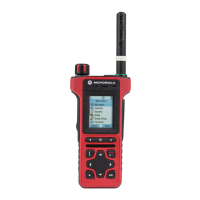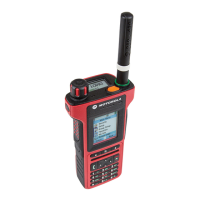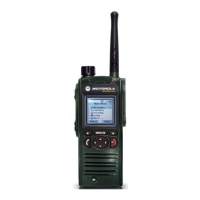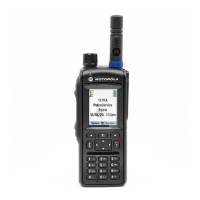2-34 Services and Feature Description
6866588D21-D Chapter 2 - MTP850 Ex/MTP810 Ex Product Information Manual March 2009
10.5 Subscriber Class
When the terminal registers on a cell that does not support any of its subscriber classes, it will only
participate in services that have emergency priority.
10.6 Local Site Trunking (LST)
Local Site Trunking (LST) is a feature that allows a base station to operate as stand-alone when the
link from the local cell to the central switch has gone down. The terminal will limit functionality when
the cell is in this mode
If system broadcasts indicate that system-wide services are not available (LST) on a cell, the
terminal will register on this cell only if there are no system-wide cells available.
When the terminal is operating on a LST cell, the terminal will prevent the user from invoking the
following services:
• Private Call
• Phone Call
• PABX Call
•Packet data
• SDS data (for example: Status, Text message)
When the terminal is operating on a LST cell, it will always search for a cell that provides system-
wide services, and roam to such a cell as soon as it becomes available.
10.7 More Air Interface Aspects
10.7.1 Multi-Cell Location Areas
If the terminal roams to a new cell that is in the same location area as the old cell, the terminal will
not perform registration.
10.7.2 ASSI Support
The terminal will accept an ASSI assignment sent by the SwMI in response to the terminal’s
registration request. This address will be used by Layer 2 layer and below only and will not be visible
to the user application. If the system is one of the allowed networks (as specified in Paragraph
10.2.1 "List of Allowed Networks"), the terminal’s ISSI will also be monitored on the downlink.
11 TETRA Network Protocol 1 (TMO)
TETRA Network Protocol type 1 (TNP1) is a bridge protocol based on the TETRA layer 3 over the
air protocol and is therefore capable of supporting all TETRA dispatch functionality.
In TMO the TNP1 specifies a protocol to be used over the PEI that allows Terminal Equipment (TE2)
to have control over the TETRA services: mobility management, call control, short data service and
supplementary services. In addition there are commands to access the radio configuration and
storage parameters.
11.1 General
The terminal supports TETRA standard multi slot packet data using the IP network layer protocol.
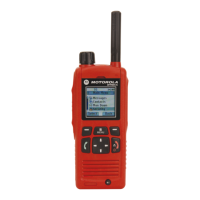
